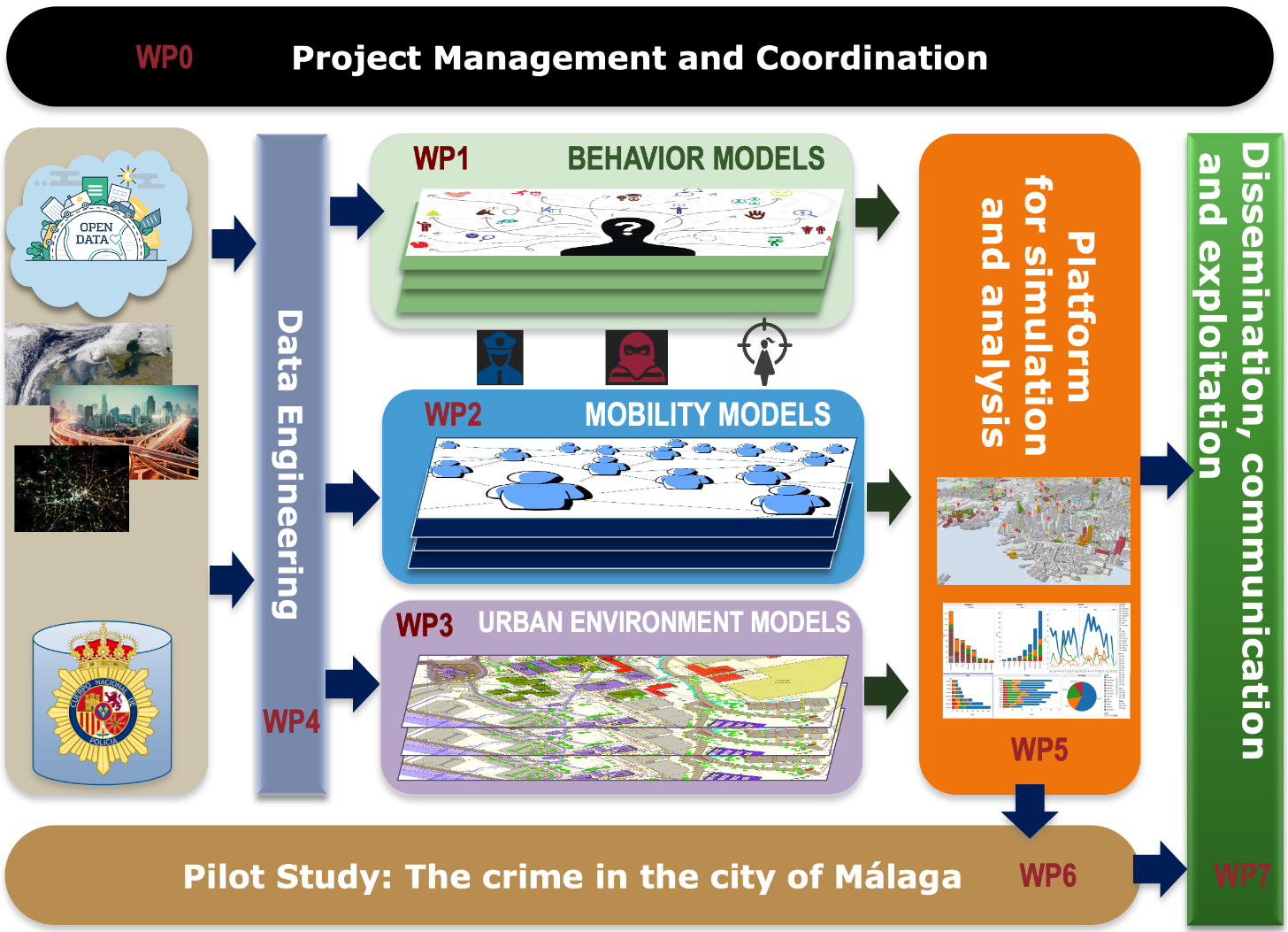ATREIDES
Agent-based simulation for predictive policing through data-driven and multi-tiered models
keywords: Agent-Based Modeling and Simulation, Predictive Policing, Data Science, Multi-Agent Reinforcement Learning
Crime is one of the biggest threats to urban safety. Around 80% of the world’s population lives in countries with high levels of crime. Predictive policing, i.e. the collection and analysis of data on past crimes in order to predict individuals or areas with an increased likelihood of criminal activity, has emerged as a critical concern in the development of policing strategies and is recognised as a key element of policing. The USA is the country with the most experience in integrating predictive policing into its policing practice. Recently, the European Commission has highlighted the need for new technologies and skills to prevent and fight crime. However, there has been much reluctance due to the lack of transparency and bias of most existing predictive solutions, which often underestimate the complexity of modeling urban crime. Crime is a complex phenomenon influenced by many factors that must be taken into account by predictive models and that have a critical impact on the quality of predictions.

Simulation modeling, and in particular agent-based modeling and simulation (ABMS) techniques, are suitable for capturing dynamic interactions between individuals and with their environment. ABMS techniques have been applied to the study of crime, mainly to test theoretical models and prevention strategies, and to mine crime patterns. However, the real potential of ABMS may lie in its ability to dynamically model the interactions between crime actors (offenders, victims, police and citizens) and the environment in which they operate. ABMS can contribute to more accurate representations of reality, but two main challenges need to be addressed first: realistic spatial environments and accurate representation of agents. In this sense, the availability of rich data sources on crime and urban environments can undoubtedly improve crime simulations and increase their transferability to the real world.
This project is part of the collaboration that has been taking place since 2018 between UMA researchers and the Intelligence Analysis Unit of the National Police, who are also members of this project. The main objective of ATREIDES is to improve the intelligence, operational, investigative and decision-making capabilities of law enforcement agencies (LEAs) through an ABMS platform. The platform will include three layers of models that can work together to simulate complex and realistic urban scenarios from heterogeneous data sources. We will use our experience with latent-trait models and other user modeling techniques to construct novel behavioral models of crime actors. Mobility is a key element of urban simulation, which also has a relevant impact on crime and is often underestimated in simulations. To this end, we will use our expertise in multi-objective heuristic search to develop realistic and novel approaches to modeling human mobility in urban environments. The third stage will pursue a collection of overlay and network-based models in different layers, including information such as traffic, pedestrian flow, weather, socio-economic aspects, etc. To ensure the success of the project, the data processing and the development of models and tools must be transparent, understandable and tailored to the needs of the LEAs. A pilot study will be carried out using the city of Malaga as a test bed, with a particular focus on gender-based crime prevention through a case study.
Principal investigators:
- Eduardo Guzmán
- María Victoria Belmonte
Researchers:
- José Luis Pérez de la Cruz
- Eva Millán
- Lawrence Mandow
- Juan Palma Borda
- Pablo Ruiz-Cruces